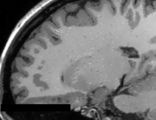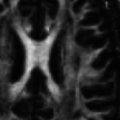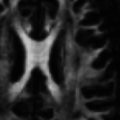Difference between revisions of "Documentation/Nightly/Extensions/AnomalousFilters"
Acsenrafilho (talk | contribs) |
Acsenrafilho (talk | contribs) |
||
| Line 46: | Line 46: | ||
* Use Case 3: Noise reduction as part of image processing pipeline | * Use Case 3: Noise reduction as part of image processing pipeline | ||
**Could offer a better segmentation and classification on specific brain image analysis such as in Multiple Sclerosis lesion segmentation | **Could offer a better segmentation and classification on specific brain image analysis such as in Multiple Sclerosis lesion segmentation | ||
| − | <gallery widths="200px" perrow=" | + | <gallery widths="200px" perrow="3"> |
Image:MRI_raw.png|Raw T1 weighted MRI Image | Image:MRI_raw.png|Raw T1 weighted MRI Image | ||
Image:MRI_AAD.png|T1 weighted MRI Image with AAD filter (q=1.2) | Image:MRI_AAD.png|T1 weighted MRI Image with AAD filter (q=1.2) | ||
Revision as of 13:32, 22 April 2016
Home < Documentation < Nightly < Extensions < AnomalousFilters
|
For the latest Slicer documentation, visit the read-the-docs. |
Introduction and Acknowledgements
|
This work was partially funded by CAPES and CNPq, a Brazillian Agencies. Information on CAPES can be obtained on the CAPES website and CNPq website. | |||||||||
|
Module Description
Anomalous diffusion processes (ADP) are mathematically denoted by a power law in the Fokker-Planck equation, leading to the generalized form. There are several generalizations of the Fokker-Plank equation, which should give many different partial differential equations (PDEs). Here we adopt only the so-called porous media form, allowing the super-diffusive and the subdiffusive processes. [1] In porous media, channels are created promoting or blocking the flow of the density function, which has been proved to provide a suitable application on MRI filtering.[2]
Basically, there are two different filters already implementing the anomalous diffusion process: the isotropic anomalous diffusion and anisotropic anomalous diffusion filters.[3] Each of these filters were already applied on different imaging MR modalities, such as structural T1 and T2 images[4], diffusion weighted images (DWI and DTI)[5][6], MRI relaxation T1 and T2 relaxometry[7] and in fMRI[8] as an initial study.
Modules
Use Cases
Most frequently used for these scenarios:
- Use Case 1: Noise reduction as a preprocessing step for tissue segmentation
- When dealing with single voxel classification schemes running noise reduction as a preprocessing scheme will reduce the number of single misclassified voxels.
- Use Case 2: Preprocessing to volume rendering
- Noise reduction will result in nicer looking volume renderings
- Use Case 3: Noise reduction as part of image processing pipeline
- Could offer a better segmentation and classification on specific brain image analysis such as in Multiple Sclerosis lesion segmentation
Tutorials
- AnomalousFilters tutorial ppt.png
- AnomalousFilters tutorial data.png
Similar Extensions
N/A
References
- da S Senra Filho, A.C., Garrido Salmon, C.E. & Murta Junior, L.O., 2015. Anomalous diffusion process applied to magnetic resonance image enhancement. Physics in Medicine and Biology, 60(6), pp.2355–2373. DOI: 10.1088/0031-9155/60/6/2355
- Filho, A.C. da S.S. et al., 2014. Anisotropic Anomalous Diffusion Filtering Applied to Relaxation Time Estimation in Magnetic Resonance Imaging. In Annual International Conference of the IEEE Engineering in Medicine and Biology Society. IEEE, pp. 3893–3896.
- Filho, A.C. da S.S., Barizon, G.C. & Junior, L.O.M., 2014. Myocardium Segmentation Improvement with Anisotropic Anomalous Diffusion Filter Applied to Cardiac Magnetic Resonance Imaging. In Annual Meeting of Computing in Cardiology.
- Filho, A.C. da S.S. et al., 2014. Brain Activation Inhomogeneity Highlighted by the Isotropic Anomalous Diffusion Filter. In Annual International Conference of the IEEE Engineering in Medicine and Biology Society. Chicago: IEEE, pp. 3313–3316.
- Senra Filho, A.C. da S., Duque, J.J. & Murta, L.O., 2013. Isotropic anomalous filtering in Diffusion-Weighted Magnetic Resonance Imaging. I. E. in M. and B. Society, ed. Conference proceedings : ... Annual International Conference of the IEEE Engineering in Medicine and Biology Society. IEEE Engineering in Medicine and Biology Society. Conference, 2013, pp.4022–5.
Information for Developers
| Section under construction. |
Repositories:
- Source code: GitHub repository
- Issue tracker: open issues and enhancement requests
- ↑ Tsallis, C. (2009). Introduction to Nonextensive Statistical Mechanics: Approaching a Complex World. Springer.
- ↑ Da S Senra Filho, A. C., Garrido Salmon, C. E., & Murta Junior, L. O. (2015). Anomalous diffusion process applied to magnetic resonance image enhancement. Physics in Medicine and Biology, 60(6), 2355–2373. doi:10.1088/0031-9155/60/6/2355
- ↑ Da S Senra Filho, A. C., Garrido Salmon, C. E., & Murta Junior, L. O. (2015). Anomalous diffusion process applied to magnetic resonance image enhancement. Physics in Medicine and Biology, 60(6), 2355–2373. doi:10.1088/0031-9155/60/6/2355
- ↑ Da S Senra Filho, A. C., Garrido Salmon, C. E., & Murta Junior, L. O. (2015). Anomalous diffusion process applied to magnetic resonance image enhancement. Physics in Medicine and Biology, 60(6), 2355–2373. doi:10.1088/0031-9155/60/6/2355
- ↑ Senra Filho, A. C. da S., Duque, J. J., & Murta, L. O. (2013). Isotropic anomalous filtering in Diffusion-Weighted Magnetic Resonance Imaging. Conference Proceedings: Annual International Conference of the IEEE Engineering in Medicine and Biology Society. IEEE Engineering in Medicine and Biology Society. Conference, 2013, 4022–5. doi:10.1109/EMBC.2013.6610427
- ↑ Senra Filho, A. C. da S., Simozo, F. H., Salmon, C. E. G., & Murta Junior, L. O. (2014). Anisotropic anomalous filter as a tool for decreasing patient exam time in diffusion-weighted MRI protocols. In XXIV Brazilian Congress on Biomedical Engineering (pp. 0–3). Uberlandia.
- ↑ Filho, A. C. da S. S., Barbosa, J. H. O., Salmon, C. E. G. S., & Junior, L. O. M. (2014). Anisotropic Anomalous Diffusion Filtering Applied to Relaxation Time Estimation in Magnetic Resonance Imaging. In Annual International Conference of the IEEE Engineering in Medicine and Biology Society (pp. 3893–3896). IEEE. doi:10.1109/EMBC.2014.6944474
- ↑ Filho, A. C. da S. S., Rondinoni, C., Santos, A. C. dos, & Junior, L. O. M. (2014). Brain Activation Inhomogeneity Highlighted by the Isotropic Anomalous Diffusion Filter. In Annual International Conference of the IEEE Engineering in Medicine and Biology Society (pp. 3313–3316). Chicago: IEEE. doi:10.1109/EMBC.2014.6944331









